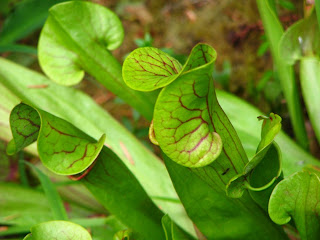You are not going to believe what we did today. We rented an ATV and headed out into the dunes. What an experience!! We were pretty much scared s...-less most of the time as we bounded up and down over hills of sand; you would swear you'd never make it. We were totally on our own, no guide. We had a ball! Lynn kept hollering to go here, don't go there, but Dan couldn't hear her through the helmet. Of course Dan got lost, but fortunately we took the GPS. Oh, then there was Lynn telling me where to go....and she was right! Might still be out there without those "yells".
September 6, 2013 – Friday
It rained lightly off and on most of the night, so it was foggy and cool this morning. We set off going south down 101 toward Coos Bay. We jogged over toward Charleston on Cape Arago road. Charleston is a commercial fishing port on Coos Bay, so we stopped to watch as they were offloading some fish. Some of the boats were interesting, as the following picture shows.
It was clearing nicely as we arrived at Sunset Beach. This is supposed to be a decent tide pool area, but the tide was on the rise when we got there, so we may go back in a day or two. Low tide is pretty early in the morning again. The beach is pretty as you can see in this picture.
A short ways down the road was Cape Arago and the lighthouse. The lighthouse is offshore on an island, owned privately, so we couldn’t visit it. The viewpoint was a mile or more away. Cape Arago is very scenic with its combination of sandstone and basaltic rock.
Another half mile was Shore Acres State Park. This one gets a 10 for the most scenic state park. Contributing big is the Simpson Garden, named for the original owner. This dude made his fortune in lumbering, so he built a big house with a formal garden. A series of unfortunate events forced him to leave it and the State bought it and restored the gardens. The mansion burned down. The garden is beautiful with plants from all over the world. It was tough to figure out which pictures to upload, here are our choices.
The following is a shot of Simpson's Reef, a hangout for sea lions and seals. It looked like some of the beaches around here on Labor Day. You could hear them hooting a half mile away. Pretty funny!
Next we drove down 7 Devils Highway to Bullard State Park to see the Coquille River lighthouse. We had conflicting information about whether it would be open, it was not. This one looks like it is in need of some TLC. It is not operational and the Fresnel lens and light have been removed.
The light is located where the Coquille River empties into the ocean. Being at high tide, there were big breakers coming in. We watched as a boat attempted to enter the river. I would estimate it in the 30 foot range and had to make several attempts as the waves were breaking a good 3 feet high at the mouth. There were times where we thought he was going into the rocks along the jetty, but he did make it. We’re pretty sure the big wave action coupled with the high tide contributed to the nasty conditions.
We finished off the day in Coos Bay where we had dinner then walked the very nice waterfront boardwalk.





























